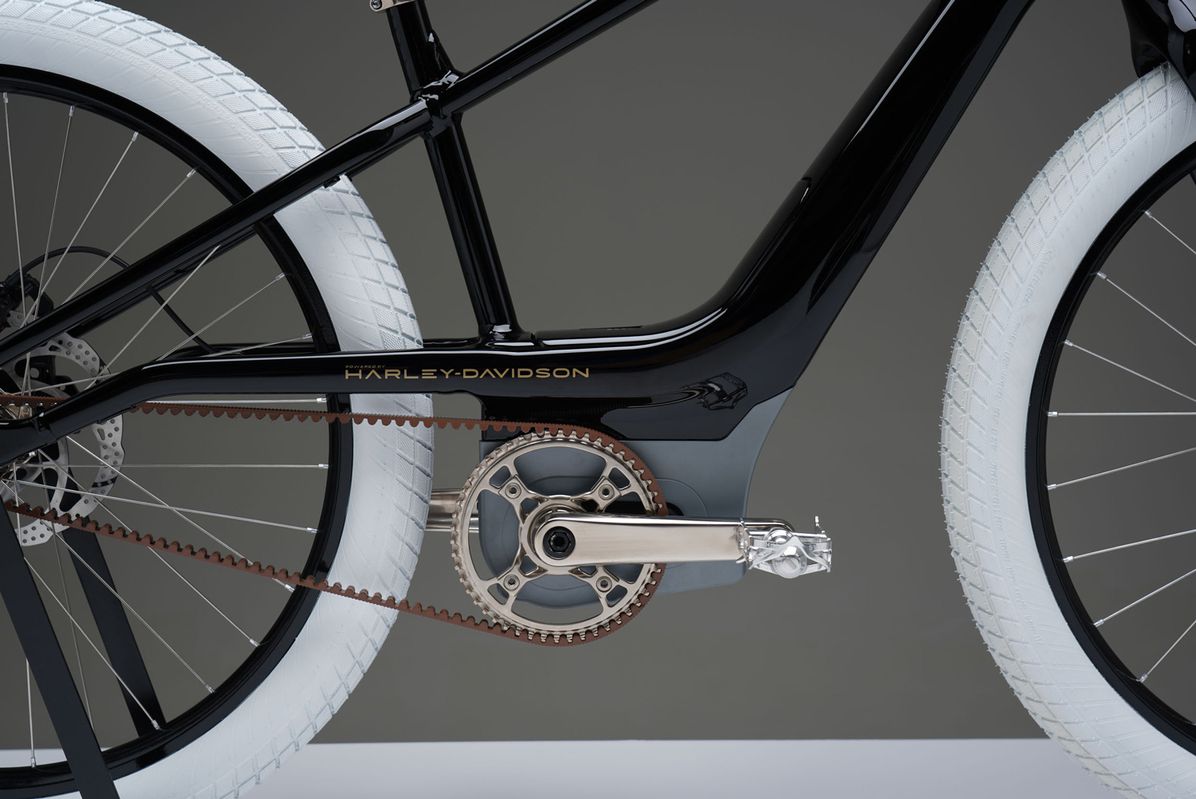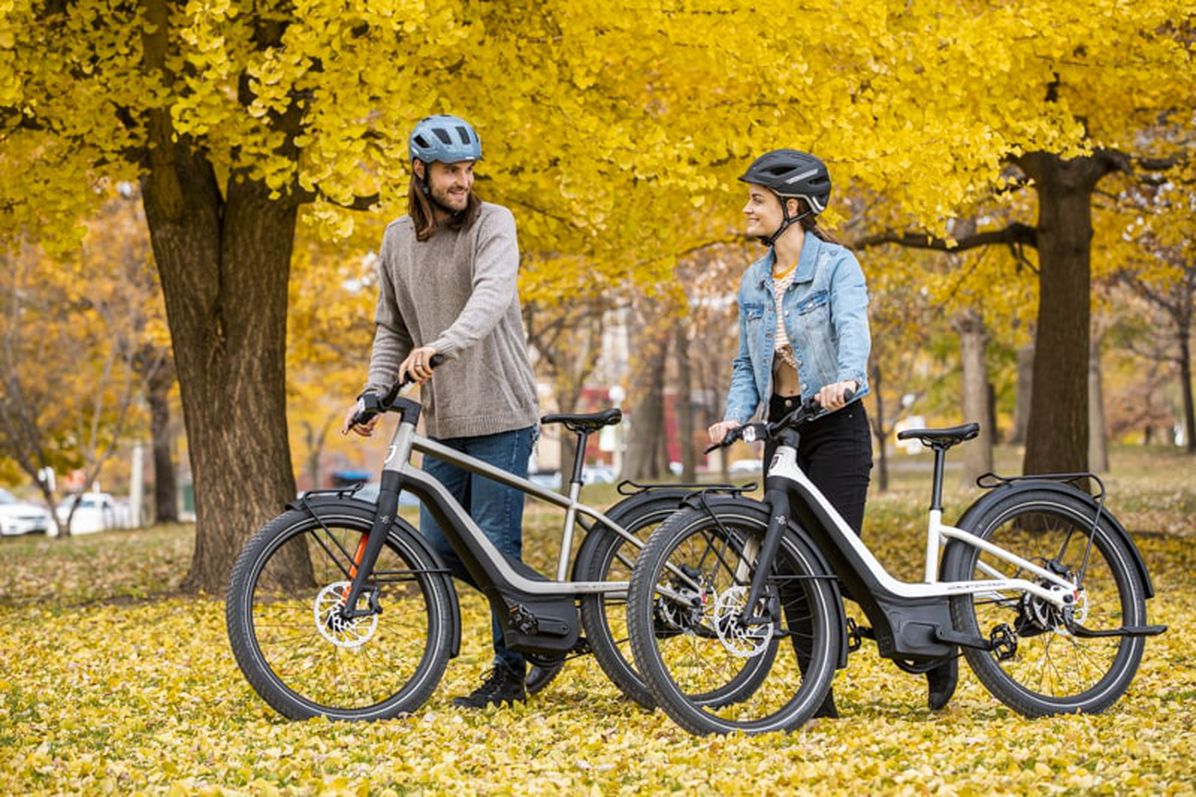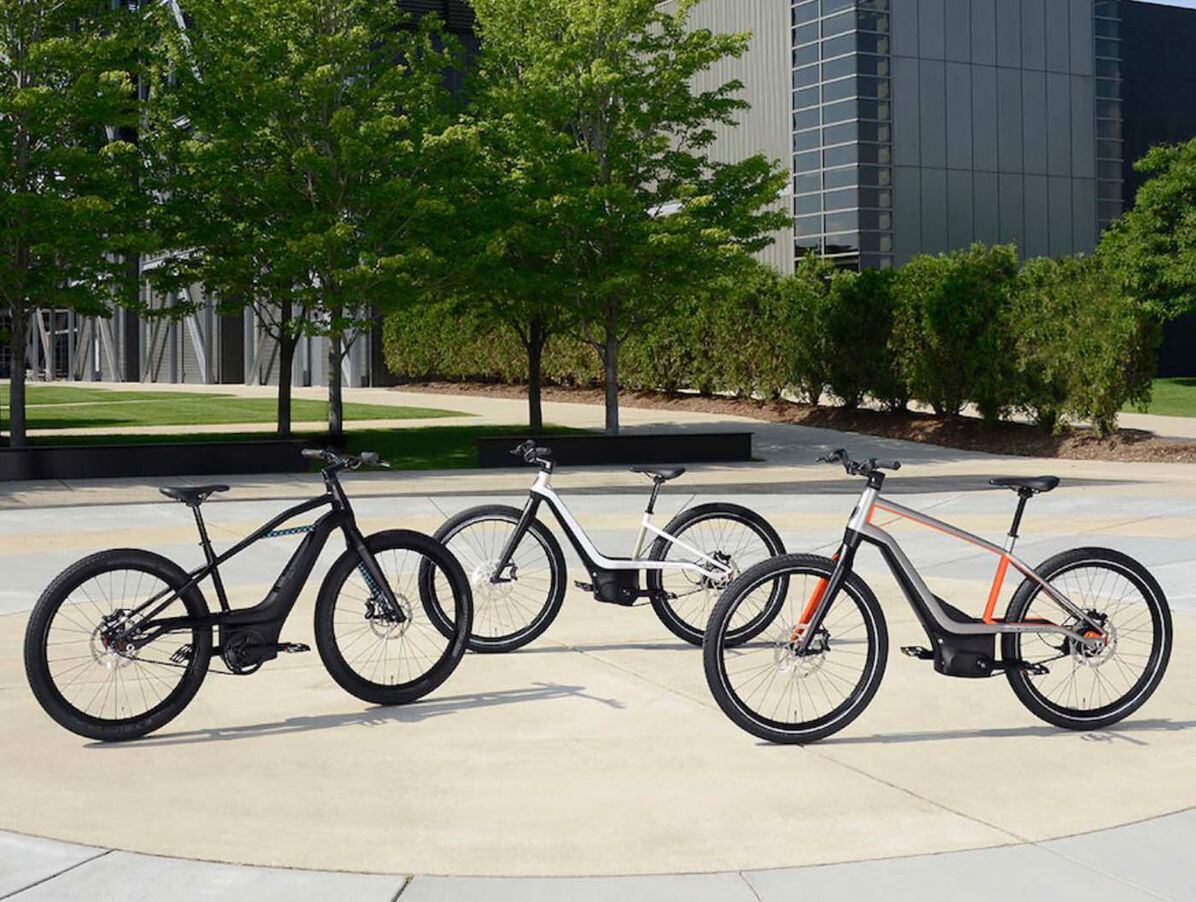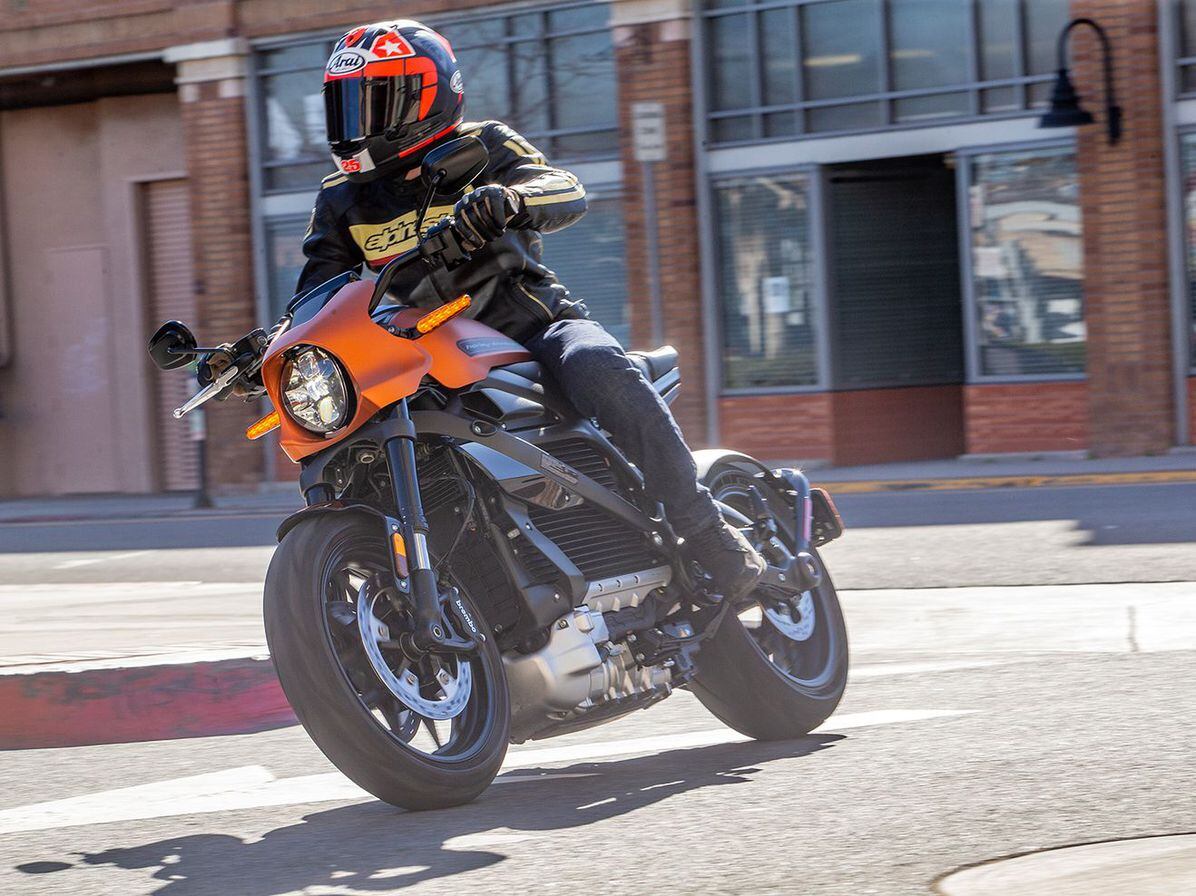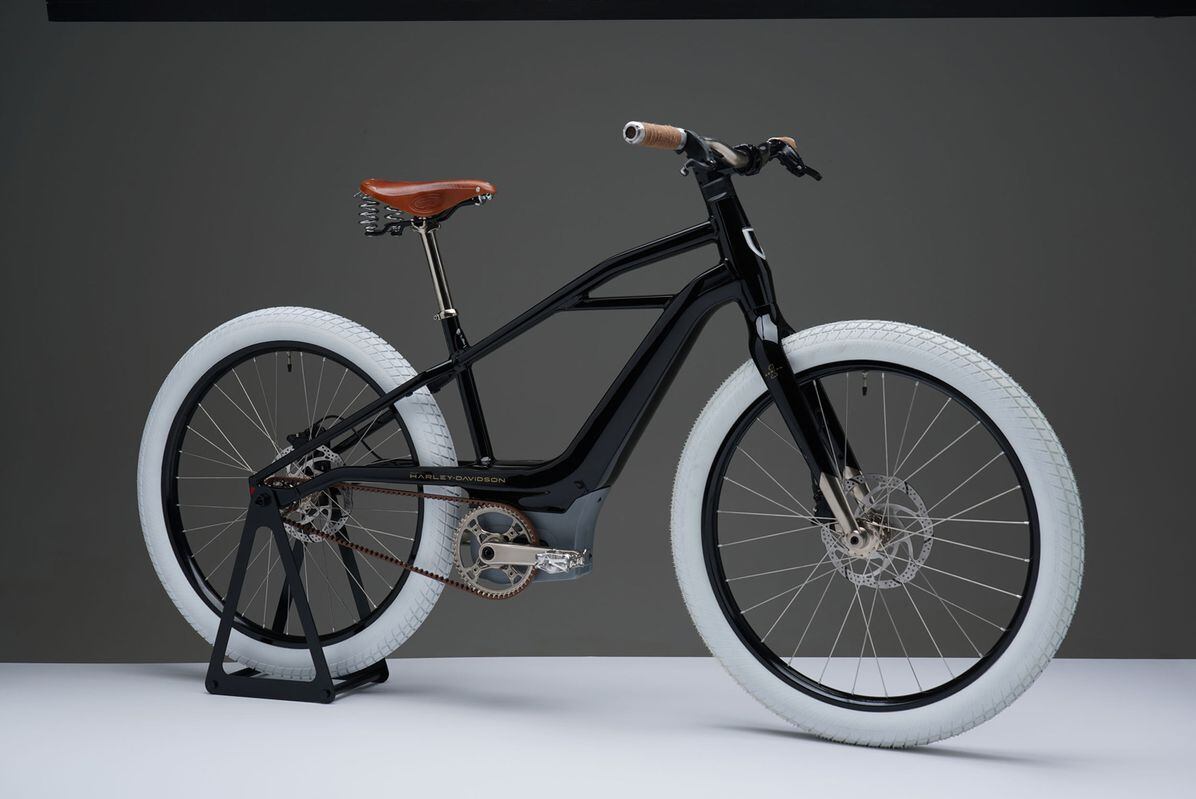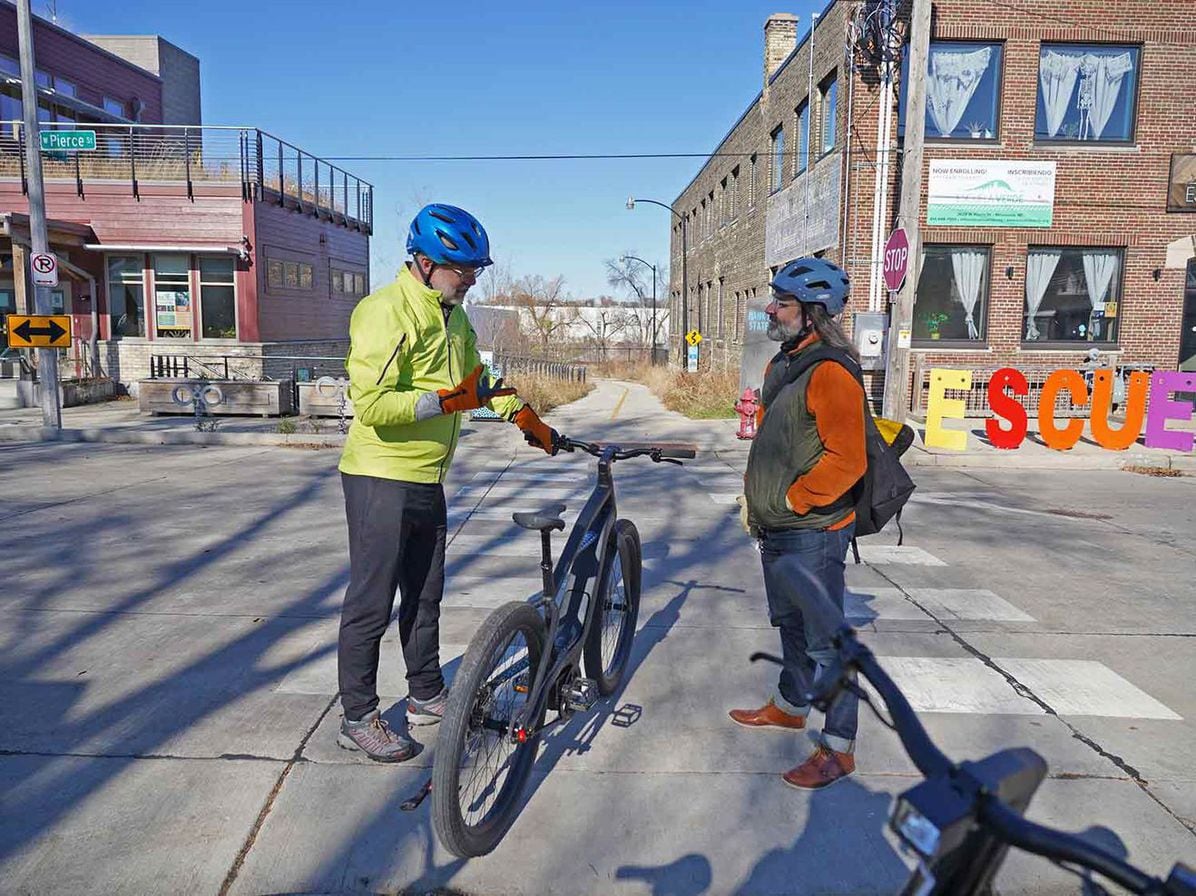Cycle Volta receives a steady stream of press releases announcing the exciting launch of “a bold new innovative” ebike. The electrics come from established bicycle manufacturers, crowdfunded Kickstarter and Indiegogo campaigns, and passionate inventors.
One intriguing category of ebikes comes from powersports brands with decades of experience with two-wheeled motorized vehicles. Companies like Harley-Davidson, Ducati, and Yamaha are throwing their product design resources behind pedal-assist ebikes.
Each motorcycle-centric brand takes a different approach. Yamaha’s Power Assist Bicycles division launched a line of pedal-assist prototypes at the Interbike trade show in 2017. Last month, Ducati announced the availability of two eMTB models starting this December. The bikes are created through a collaboration between Ducati and Thok, an Italian ebike brand.
The concepts behind Serial 1 came to life in Harley-Davidson’s Product Development Center skunkworks. Earlier this year, after a strategic change in Harley-Davidson’s long-term business plan, the ebike project was spun off as Serial 1 Cycle Company. The motorcycle company retains a minority stake.
Although Serial 1 is an independent, stand-alone company, the startup can tap into Harley-Davidson’s extensive experience in electric vehicle engineering, analysis, and testing.
“Serial 1 was born out of Harley-Davidson, and still carries over a lot of Harley-Davidson DNA in terms of people, processes, and product expectations. We still have access to Harley-Davidson engineering, analysis tools, labs, testing, regulatory resources, and legal resources—anything we need,” said Ben Lund, vice president of product development at Serial 1.
The Serial 1 staff consists of many former Harley-Davidson employees involved in the original concept and prototype development. “That is the biggest advantage for us. No 1 is having people who already had a lot of experience in the field of electrical engineering and electric vehicle design and development. They were working not only on the public-facing version of LiveWire (Harley-Davidson’s electric motorcycle), but a lot of other projects for many years,” said Aaron Frank, Serial 1′s brand director.
That Harley-Davidson institutional knowledge base led to product component decisions a smaller traditional bootstrapping startup may not have been able to pull off. “That (history) was what really drove the decision to create our own integrated battery. There are a lot of off-the-shelf batteries that are available with components that hide in the downtube, but they don’t do as good a job of bringing the weight as low as possible. We know from designing motorcycles that the lower and more compact and more centralized you can have the most mass, the better,” Frank said.
At a typical startup, everyone wears 800 hats, and no one does anything really well. “I am the single point of contact between Serial 1 product development and Harley-Davidson,” Lund said. “If my team needs help, I reach out to the responsible party at Harley-Davidson and we are able to schedule testing or lab time or whatever we need to do and we go from there. We have access to Harley-Davidson specialists that we can contact at any time, so we’re never just taking guesses. It’s a very straightforward and neat arrangement.”
Harley-Davidson no longer has oversight over Serial 1′s design and engineering. The formal separation permits Serial 1 to take action without a complicated multilevel corporate decision-making process. Before Serial 1, “we had to get sign-off from a larger team at the Product Development Center, which has protocols and other complications. Serial 1 has complete design and engineering flexibility,” Frank said.
But the close relationship and access to Harley-Davidson engineering expertise helps Serial 1 reduce learning curves significantly. “We see this access to such high-quality people, processes, and facilities as a huge advantage for Serial 1, especially when compared to other startups. Most startups don’t have access to nearly the capabilities and connections that we have access to at Harley-Davidson: world-class analysis, electrical test lab, structure test lab, noise test lab, test tracks, tools—you name it, and there is a technical expert at Harley-Davidson who I can go to for guidance,” Lund said.
“There’s an engineering ethos at Harley-Davidson, and it goes like this: computer to lab to test track to road,” Lund added. “We don’t do development by trial and error; there’s no build-break-fix-repeat. We do so much planning, CAD, and lab work up front that, by the time we get to making an actual part, we already have 98 percent confidence that it’s good to go. This fine-tuned engineering process makes product development so much faster, and better. Even many established manufacturers can’t match the resources we have right at our fingertips. This is what ‘Powered by Harley-Davidson’ means.”
In the future, ebikes from powersports brands may capture significant market share. For Serial 1 Cycle Company, the support of a 118-year-old, $6 billion mentor like Harley-Davidson can be a competitive advantage.
